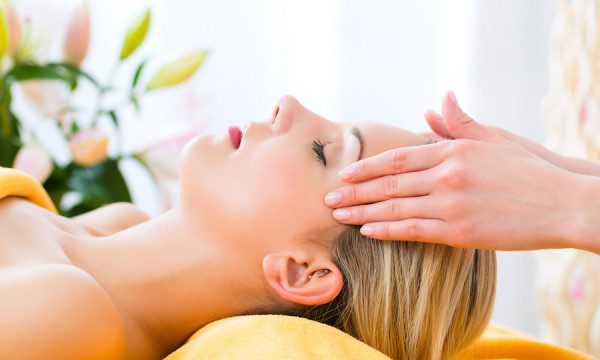Contents
Californian massage
What is Californian massage?
More commonly known as the “touch of the heart”, Californian massage is a psycho-bodily practice dating from the 70s. In this sheet, you will discover what this massage consists of, its principles, its history, its benefits, the course of a session, how to practice it and its contraindications.
Californian massage is a global approach which aims as much for relaxation as for awakening a psycho-body consciousness. This massage uses long, slow and fluid movements that allow deep physical and mental relaxation.
Note that this massage is presented under different names: harmonic massage, neurosensory, holistic or sensitive. The use of the term “sensitive” to describe a Californian massage, however, leads to confusion with the Sensitive Massage® created by Claude Camilli, which is an approach that has little to do with the massage itself.
The main principles
Starting from gentle, enveloping and relaxing effleurages, the maneuvers follow one another and intensify to relieve deeper tensions. This can bring up and release hidden emotions, inscribed in the body’s memory. The more the person massaged abandons himself to the experience, the more he opens up to what Californian massage describes as touching the heart.
Deeply sensitive, the good progress of the Californian massage depends totally on the connection between the donor and the recipient. Indeed, it is essential that the therapist is listening and that the massaged is in total confidence.
The benefits of Californian massage
Until today, there are no scientific studies that have studied the specific effects of Californian massage. However, according to some specialists, Californian massage would have many benefits:
Relieve certain types of pain
According to the Fédération québécoise des massothérapeutes, Californian massage would help effectively relieve people suffering from chronic pain and muscle pain in people with fibromyalgia, arthritis or other diseases.
Promote the emergence of bodily memory
By detecting the tensions and underlying emotions, Californian massage helps people with a traumatic experience or who are following a psychotherapeutic process to free themselves.
Provide great relaxation
The feeling of well-being caused by Californian massage is conducive to reducing stress and anxiety. This is accentuated by the use of essential oils.
Improve blood circulation
The long movements allow to drain the venous and lymphatic circulation, which causes a better oxygenation and irrigation of the tissues.
Become aware of your body and reclaim it
Californian massage allows you to refocus on your bodily sensations and fully integrate them. This is why it is recommended for individuals who have undergone significant bodily changes (such as significant weight gain or loss).
In addition, numerous studies confirm the effectiveness of massage in general in relieving several ailments. For more details, see the Massotherapy sheet.
Californian massage in practice
The specialist
Californian massage is one of the most popular techniques for beauty centers and spas. The technique is also practiced in private practice and in personal growth centers. The Californian massage specialist can therefore be as much a therapist as a esthetician. In addition, the practice of this massage requires a particularly high degree of listening on the part of the specialist and an ease in building confidence in the client.
Course of a session
First of all, the specialist asks his client about his health and his needs, he can then proceed to the massage. Californian massage is an oil massage that usually lasts 1 hour. The person is naked, lying on the floor or on a massage table. The practitioner invites the person massaged to feel the tensions and emotions that inhabit him and to surrender to this inner journey. The Californian massage technique involves different maneuvers that begin with slow and harmonious touches, followed by sliding pressures that become more supported on particularly tense parts of the body.
Become a practitioner in “Californian massage”
There is no official body overseeing Californian massage training. It is the professional associations that ensure that quality standards are met for both training and practice. In Quebec, several schools offer training in Californian massage. The duration of the training is generally 165 hours. It is part of a 400-hour program, leading to a diploma in massage therapy practitioner. In France, Californian massage training courses are diverse and can cost from 150 to 1000 euros. Most organizations offer training in 21 hours, over 3 days.
To learn the technique, one-day or weekend workshops are offered to the general public. You will not become a massage therapist, but you will be able to massage your loved ones better, who will surely appreciate it! There are also books and DVDs for learning basic movements.
Contraindications of Californian massage
Californian massage is a very gentle technique. This is why there are few contraindications to this type of massage. Thus, Californian massage is especially not recommended for individuals with fever, heart disease, circulatory disorders or osteoporosis.
In some cases such as pregnancy, the presence of fractures or skin conditions, it is advisable to take all necessary precautions to avoid any danger.
History of Californian massage
Californian massage appeared at the beginning of the 1970s, at the time of the emergence of therapy groups where the development of human potential, the expression of feelings and body-mind connections took precedence. The Esalen Institute, a growth center located in Big Sur, California, brought together many researchers who greatly contributed to this line of thought. Various forms of therapy and several bodily techniques were born there.
The Californian massage technique was created by Margaret Elke. She was inspired by the softness of the Esalen massage that she combined with a more interior and emotional approach. She taught the technique in the United States, then in France, among others as a complementary tool to psychotherapeutic work. The technique was especially popularized from the 1980s.










